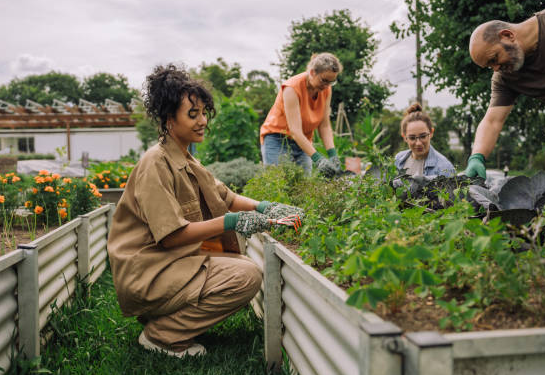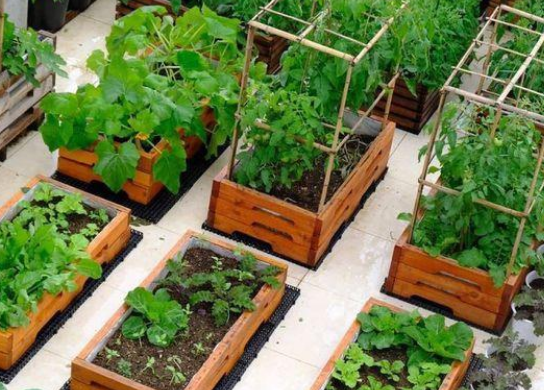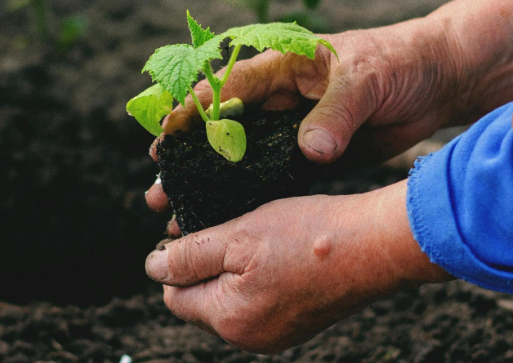Many people enjoy growing vegetables in their gardens, but most of them lack experience and don’t know how to properly set up an efficient vegetable garden.
While gardening might seem simple, growing vegetables actually requires some techniques, just like growing any other plant. To make the most out of your vegetable garden, here are some tips that can help!

1. Choose the Right Location for Your Vegetable Garden
Vegetables, like all plants, need plenty of sunlight to grow well. Most vegetables thrive in full sun and require at least 6 hours of sunlight per day to produce abundant harvests.
So, when setting up a vegetable garden, choose a location with good sunlight. Avoid places with poor light conditions, such as garden corners or behind fences. Areas on the west or south side of your garden are ideal for vegetable planting.
I often see garden videos online where people place their vegetable gardens in corners or behind walls where they hardly get any sunlight. Although this might seem like a reasonable arrangement, it neglects the crucial issue of proper sunlight exposure.
Without adequate sunlight, how can vegetables grow well?
2. Plan Your Garden Layout
Do vegetable gardens need a layout plan? Absolutely!
The difference between a good and bad vegetable garden often lies in the layout.
The layout of your vegetable garden depends on the size of your garden space.
For larger gardens, you have enough room to separate the vegetable garden into its own functional area.
For smaller gardens, space is more limited. In this case, you’ll need to make the most of the available space and ensure that the garden is functional and easy to use. Maximizing the space while keeping things practical is key.
Additionally, your garden layout should be designed for ease of use. How can you ensure that?

First, make sure you can easily reach your plants to plant and harvest them.
To achieve this, the planting beds shouldn’t be too large or extend beyond the reach of your arms. If they do, make sure to include a path in between so you can easily access all parts of the garden. This is why many vegetable gardens are designed as small squares or long rows!
Second, ensure that the soil in the planting beds isn’t washed away by rain or watering.
To prevent soil erosion, you can install borders around each planting bed using materials like bricks, stone slabs, tiles, treated wood, or stacked stones. This will keep the soil in place and prevent it from being washed away.
Why do we do this?
Two reasons:
-
The soil used for planting vegetables is nutrient-rich. If it’s washed away, it can hinder the growth of your vegetables.
-
If the soil is washed everywhere, it will pollute your garden’s surface, making it muddy and unpleasant to walk on.
Therefore, always border your planting beds to keep the soil in place.
Finally, leave space between the planting beds for pathways.

Why?
You need pathways to enter the garden to plant, maintain, and harvest the vegetables. These paths are essential for accessibility.
What’s the ideal width for a path?
In my opinion, a width of 40-60 cm (16-24 inches) is enough for one person to walk through.
You can cover the path with garden bricks or gravel to save some costs.
By focusing on these three points, your vegetable garden layout will be much more efficient and practical than a poorly planned one!
3. Choose the Right Soil for Growing Vegetables
Anyone who has gardened before knows that healthy, nutrient-rich soil is essential for growing good vegetables.
If you want to grow great vegetables, start by selecting the right soil.
What makes soil good soil?
The best option is, of course, the soil from a rural vegetable garden, but that’s not always possible. In urban gardens, people typically buy soil and mix it themselves, or they can buy pre-mixed soil.
A common mix for vegetable gardening includes peat moss or humus soil, base fertilizer or well-rotted compost, and some coarse sand. Mixing these ingredients will create the perfect soil for growing vegetables.
These are the three key tips I’ve summarized for creating a successful vegetable garden in your backyard. Feel free to refer to them when setting up your own garden!

